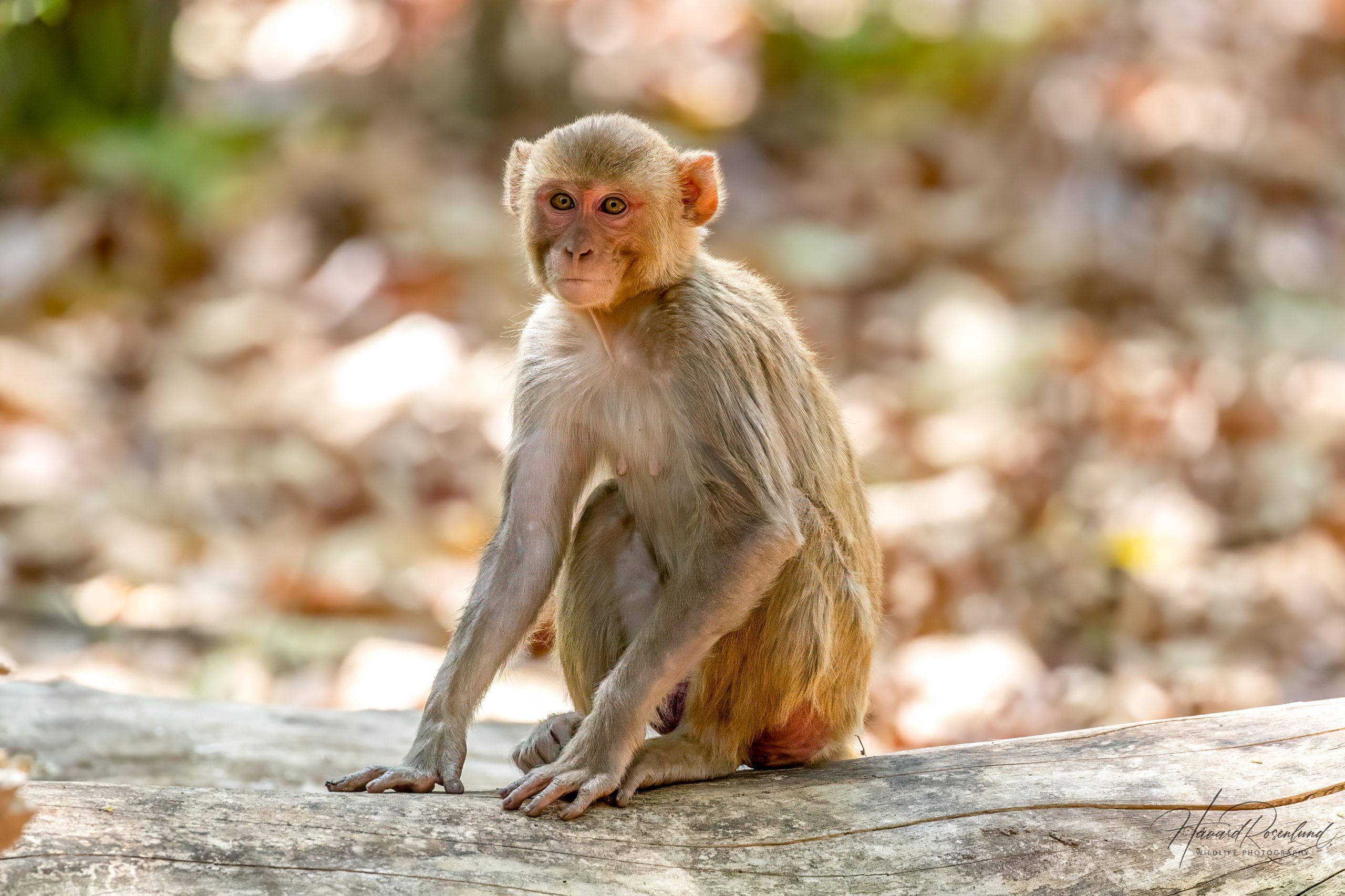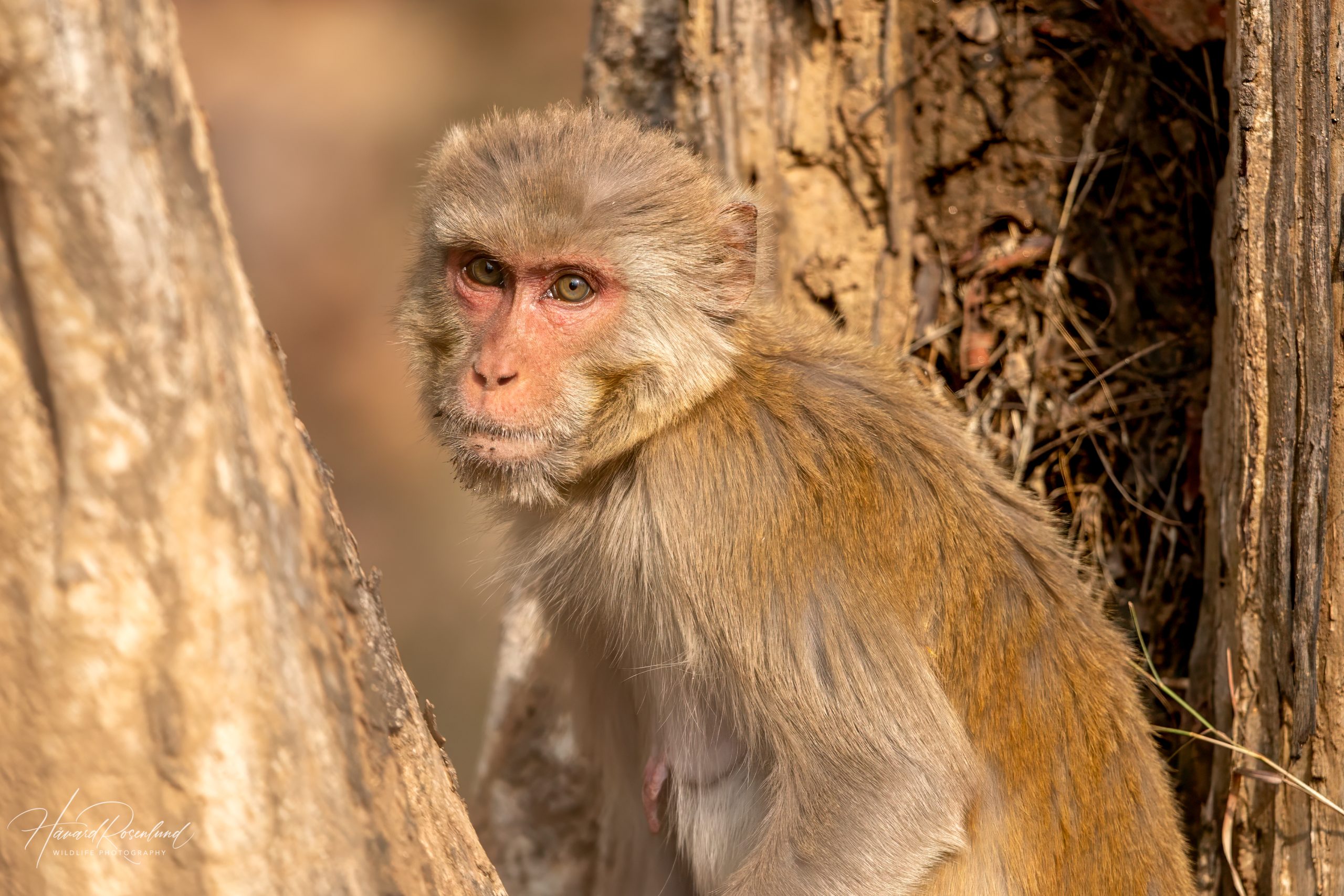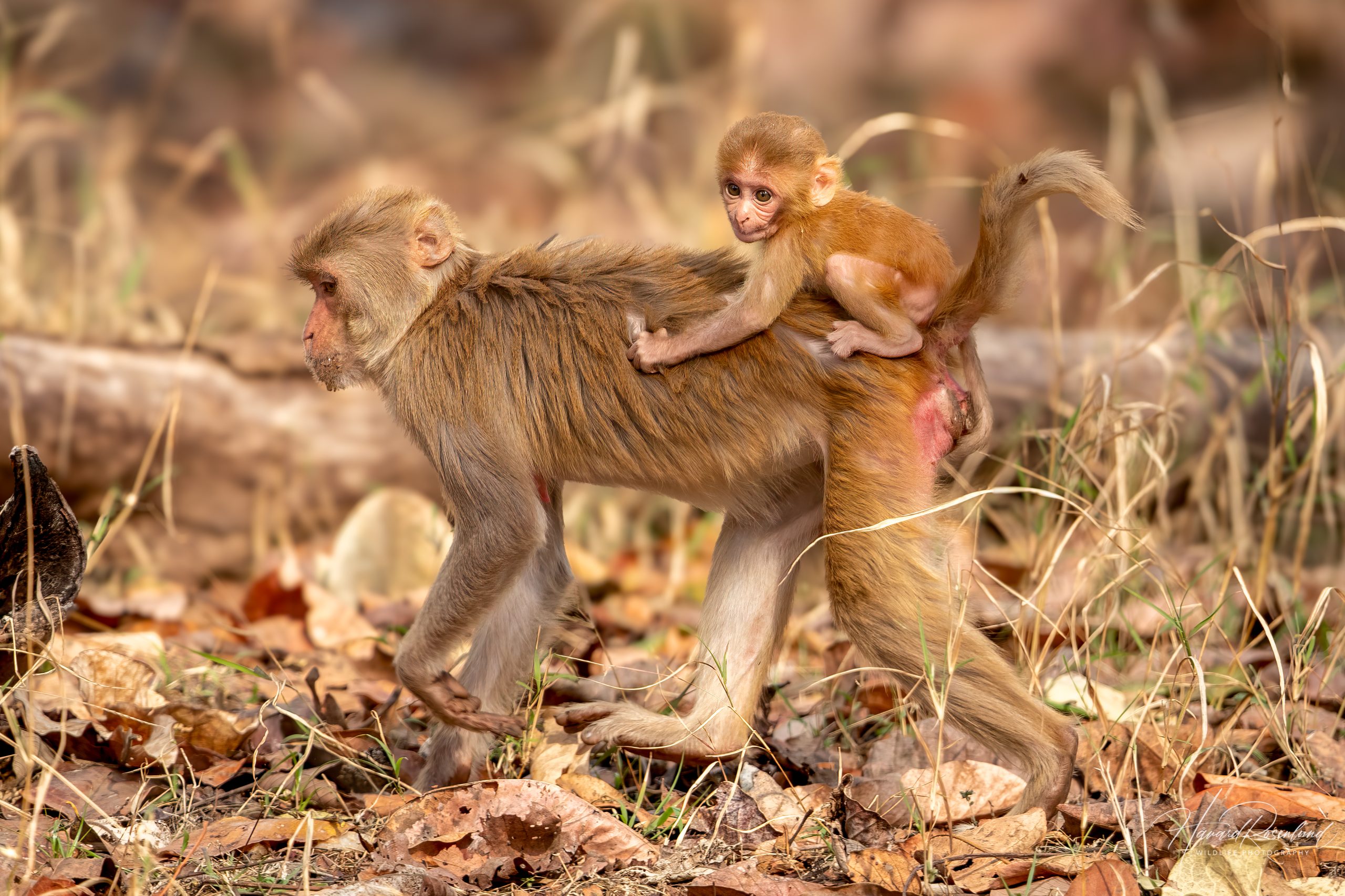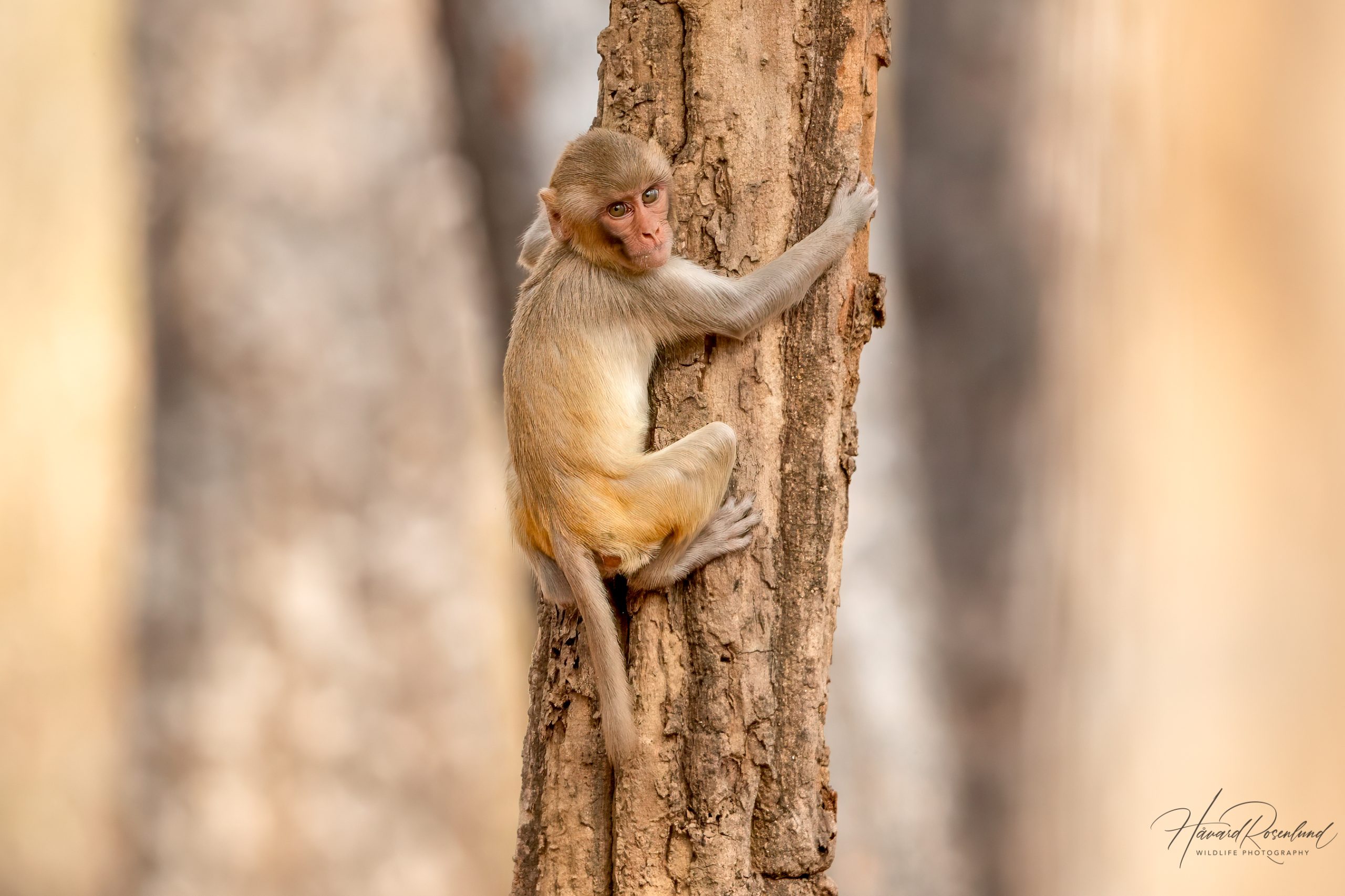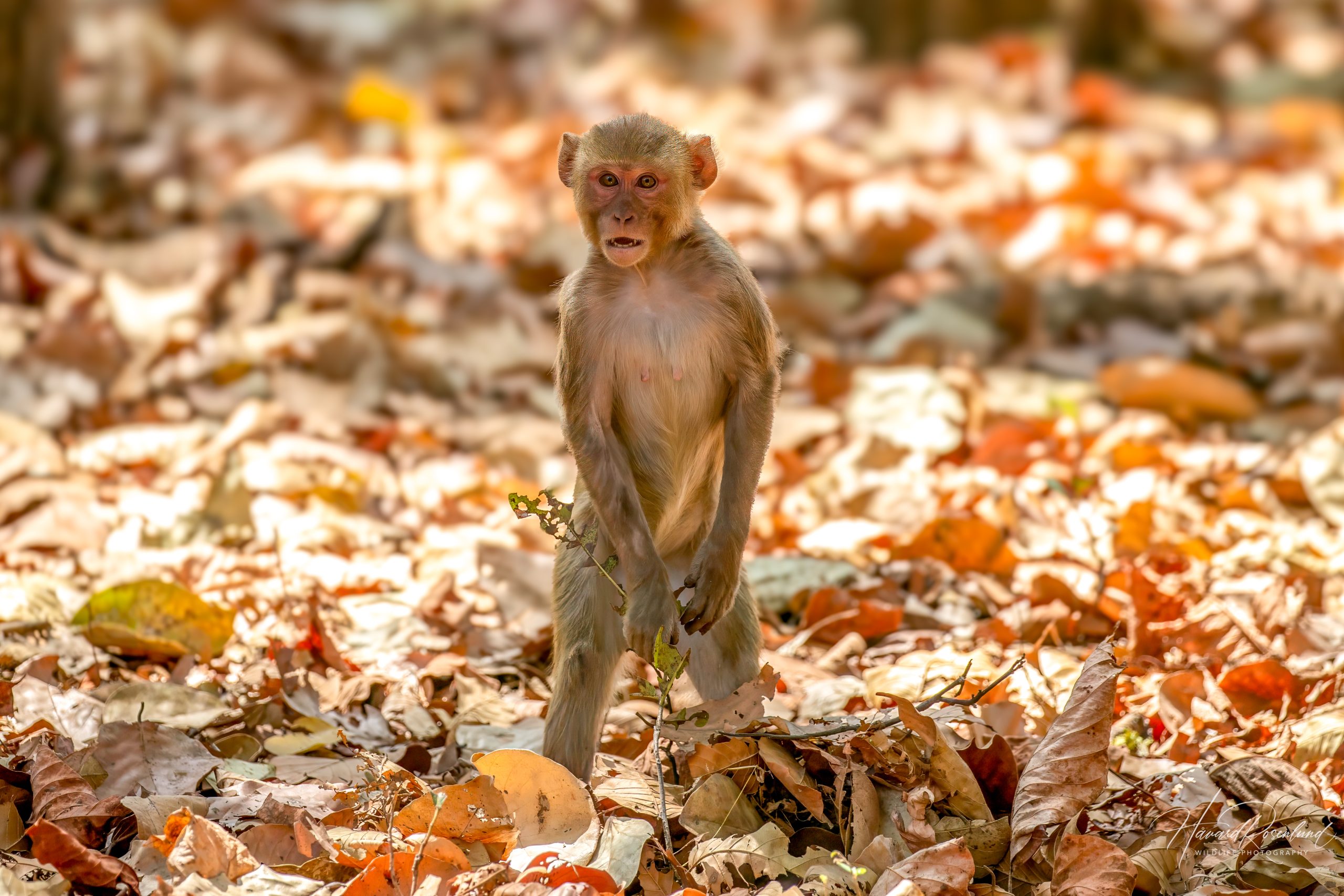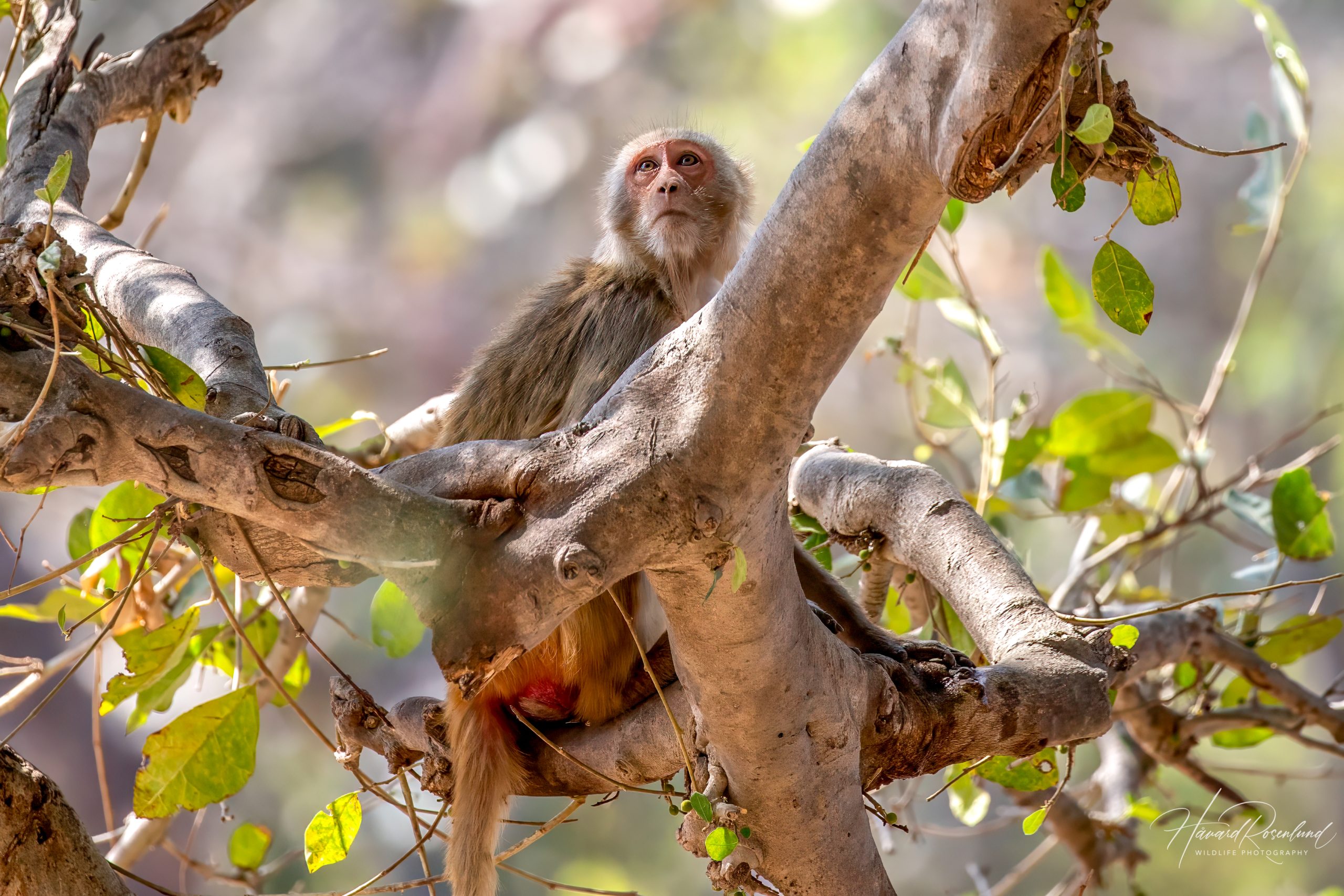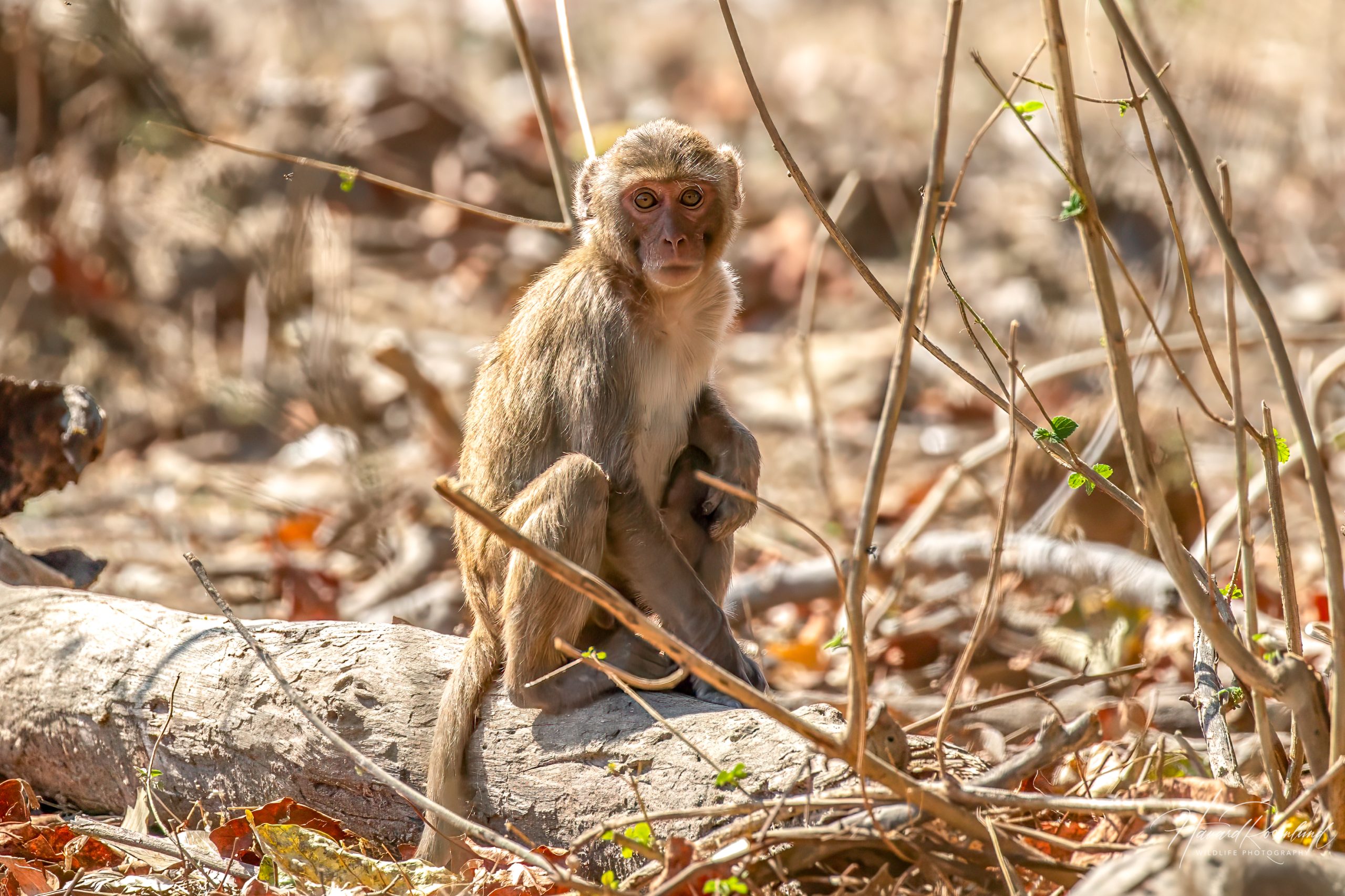Description
The rhesus macaque (Macaca mulatta), also known as rhesus monkey, is one of the best-known species of Old World monkeys. It is native to South, Central, and Southeast Asia, with its range extending from Afghanistan through India and Nepal to northern Thailand and southern China. Adult males typically weigh between 6 to 11 kg (13 to 24 lbs), while females are smaller, weighing around 4 to 7 kg (9 to 15 lbs). They measure about 47 to 53 cm (18 to 21 inches) in body length, excluding the tail, which is about 20 to 22 cm (8 to 9 inches) long. Rhesus macaques have a brown or greyish coat with a pink face that is bare of fur. One distinguishing feature from many other species of macaque is its relatively short tail.
Diet & habitat
Rhesus macaques are highly adaptable in terms of habitat, found in a variety of environments from dense forests and open grasslands to human settlements. They are omnivorous and have a varied diet that includes fruits, seeds, roots, buds, bark, cereals, and invertebrates. They are known for their ability to exploit human resources, often seen scavenging in urban areas and raiding crops in agricultural zones.
Rhesus macaques are both arboreal and terrestrial, foraging on the ground and in the trees. They have a complex feeding behavior and are known to wash their food, a behavior observed primarily in those living near water sources. This demonstrates a level of behavioral flexibility and intelligence.
Behavior
Rhesus macaques are highly social animals, living in multi-male, multi-female groups that can number from 20 to over 200 individuals. Social hierarchy is a significant aspect of their behavior, with clear dominance hierarchies among both males and females. They communicate using a variety of vocalizations, facial expressions, and body postures. Grooming plays a crucial role in social bonding and maintaining social structures within the group. These macaques are diurnal, meaning they are active during the day and rest at night. They are known for their curiosity and intelligence, often engaging in play and exploration.
Reproduction
Rhesus macaques breed seasonally, with mating typically occurring from October to December. Females give birth after a gestation period of approximately 165 days, usually to a single offspring, though twins are rare. The mother is the primary caregiver, nursing and protecting the infant for the first few months of life. Infants are born with a dark coat, which lightens as they mature. Weaning occurs around one year of age, although young macaques remain close to their mothers for several years. The life expectancy of rhesus macaques in the wild is about 25 years, though they can live longer in captivity.
Relationship to humans
Rhesus macaques have a long-standing and complex relationship with humans. They are considered sacred in some cultures and are often found in temples and towns, where they are fed by devotees. However, they can also be seen as pests, particularly in agricultural areas where they raid crops.
In scientific research, rhesus macaques are highly significant. They have been used extensively in biomedical research, including studies on human disease, genetics, and behavior. The rhesus macaque was crucial in the development of the polio vaccine and continues to be a valuable model in medical and psychological research. The rhesus (Rh) factor in blood, important in understanding human blood types, is named after the rhesus macaque due to its discovery in this species. This species was also the first primate to be sent to space, paving the way for human space exploration.
Status
The IUCN Red List classifies the rhesus macaque as least concern due to its wide distribution and large population. However, they face threats from habitat loss and fragmentation, particularly due to urbanization and agricultural expansion. Despite these pressures, their adaptability to diverse environments has allowed their populations to remain stable in many regions.




